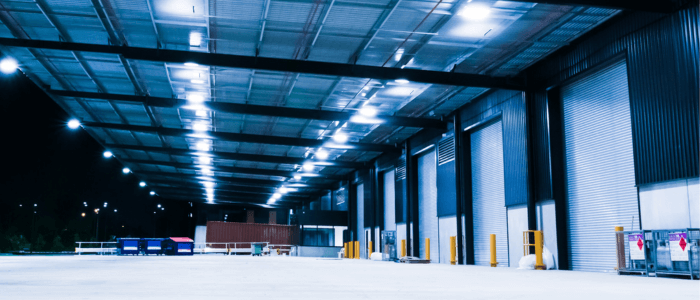Recap of the changes
In the Budget announcement of May 9, 2017 the Government stated their intention to limit the deductions claimable by investors for the depreciation of their Plant and Equipment assets in residential investment properties, for properties purchased following the announcement.
Further to their initial announcement, the Government has now published their Draft Bill released to the public on 14th July 2017. The Draft Bill provides some further clarification of the government’s intention and provides some guidance on how they expect depreciation claims for investors will change going forward. We have highlighted the most recent updates from our previous article in green below.
Firstly, a reminder of who is actually affected by these changes?
Investors who have purchased an established (not brand new) residential investment property after 7.30pm, Tuesday 9th May 2017 would be directly affected by this change. Purchase being an exchange of contracts.
There is no change for…
- Investors claiming, or entitled to claim depreciation for an investment property they already own, or exchanged upon prior to 7.30pm, Tuesday 9th May 2017;
- Investors who purchase a newly-built investment property as the first owner;
- Investors who have engaged a builder to build their new investment property;
- Investors who move out of their principal place of residence, and convert it to an investment property;
- Investors who purchase an established property and replace the acquired assets with new assets they purchase themselves (eg. renovate and replace old assets with new assets);
- Investors who own only commercial investment properties;
- Investors whose property is owned within a corporate tax entity, super fund (not including self managed super funds) or a large unit trust;
- Investors who have purchased a property that has undergone such substantial renovations that it qualifies as ‘new residential premises’ in accordance with Section 40-75 of the GST Act – see our further article here for more details.
All of these investors will continue to claim depreciation for both Division 43 (Building) and Division 40 (Plant and Equipment assets) as they have previously. If these investors don’t already have a depreciation schedule for their existing investment property, a schedule for these properties will still be prepared in accordance with the legislation that was in place when they purchased their property.
What is ‘Plant and Equipment’ or Division 40 assets?
Plant and equipment items are the assets within an investment property that are generally considered ‘easily removable’ or mechanical in nature (not structural). Examples of typical plant and equipment items include carpet, blinds, kitchen appliances, light shades, security systems, elevators, air conditioners, hot water systems etc. These assets have individual values and effective lives and are one of 2 types of depreciation claimable by investors, and form one component of an investors depreciation schedule.
How have these assets been treated to date?
Since the mid 80’s an investor who purchased an established residential investment property (including it’s second-hand plant and equipment assets), could claim for depreciation of those assets (including when depreciation may have been claimed by a previous owner as well). Assets could be assigned new residual values and new effective lives each time a property changed hands, and be depreciated by the new investor accordingly.
For example, if an investor purchased a unit in a 5 year old apartment complex with an elevator (effective life of 30 years), this investor could still claim their share of the depreciation value of that lift over the remainder of it’s 25 year effective life. The investor would claim depreciation on the lift going forward, as well as on all of the other plant and equipment items they acquired as part of the purchase of the unit.
What would the change mean?
Going forward, plant and equipment assets acquired when a property is purchased by a subsequent owner would no longer qualify as depreciable assets for the new owner. Continuing the example above, the new owner would never be entitled to claim any share of the depreciation value of the lift, or any other plant and equipment assets that were acquired as part of the purchase of the unit.
What about capital allowances/building write-off/Division 43 deductions?
All investors will still be able to claim for the depreciation of qualifying built/constructed components of their investment properties, often referred to as capital allowance, building write off or Division 43 deductions.
Buildings are written down at 2.5% per annum over a 40 year effective life. All investors remain eligible to claim for these deductions regardless of when they purchase their property. The starting value for depreciation purposes is the construction cost of the building at the time it was built. For established properties, the construction cost (minus the value of the plant and equipment items) will need to be established in order to depreciate it accurately. Quantity surveyors are one of the few professions recognised by the ATO to estimate construction costs for new and previously constructed buildings.
So which investors would still need/benefit from a depreciation schedule?
In our team’s experience (20 years producing depreciation schedules), the majority of properties we assess would still benefit from a depreciation schedule prepared by a quantity surveyor. The reasons being that most of the properties assessed are either:
- Brand new;
- Have undergone capital improvements/additions during the qualifying period that remain depreciable;
- Include new replacement plant and equipment items purchased by current owners.
Additionally, whilst investors purchasing second-hand property can no longer claim depreciation on the existing plant and equipment, they will be able to deduct that depreciation from the sale price at the time of sale, reducing capital gains tax. So the benefit of the claiming depreciation on plant and equipment has simply been moved to the end of the ownership period, rather than being claimable during ownership.
Who wouldn’t benefit from a depreciation schedule?
Going forward investors who purchase an old property, that has no qualifying Division 43 deductions remaining will not benefit from a depreciation schedule as the they will no longer be able to claim for the plant and equipment assets either.
Key takeaways
- For investors who purchased their property prior to 09/05/2017 – “Stay Calm – Nothing has changed”;
- For investors who are purchasing brand new properties as a first owner – “Stay Calm – Nothing has changed”;
- For investors who purchase an established (not brand new) property as an investment on or after 10/05/2017 – Division 43 Building Write Off is still claimable for all properties built after 1987 but you will be unable to claim depreciation of plant and equipment items acquired through the purchase.
If you have any queries about whether the announced changes affect you, or any queries about depreciation of investment properties in general, please contact our expert team on 1300 922 220 or info@capitalclaims.com.au – we will be more than happy to help. Or if you would like a free personalised quote complete our simple “Get a free quote” online form.
We look forward to hearing from you soon!








